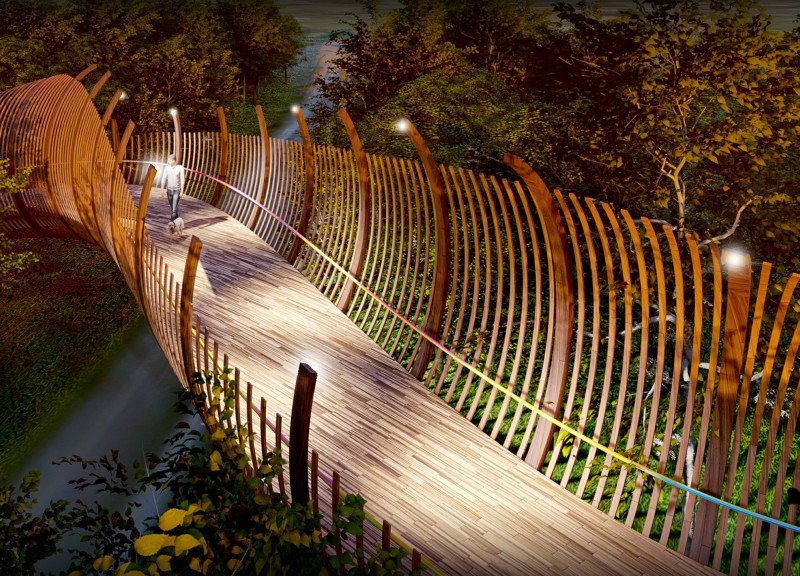5 key facts about this project
The BAZINICAS STREET footbridge is located in the scenic Gauja National Park in Latvia, designed to improve pedestrian access across a roadway while being mindful of ecological concerns. The design combines practical use with visual appeal, creating a shape that fits naturally into the surrounding landscape. The footbridge functions not just as a way for people to cross but also encourages interaction with the natural environment, highlighting the importance of sustainability and environmental awareness.
Design Concept
The design features a gentle S-Curve that connects different walking paths, making movement easier while enhancing the visual journey through the park. This curve serves practical needs but also invites visitors to engage with their surroundings more fully. The overall form intends to mirror the natural contours of the land, creating a flowing transition between the bridge and the landscape.
Ecological Integration
The project draws inspiration from the European Roller, a local bird species that is endangered. By focusing on this creature, the design reflects a commitment to ecological responsibility. The footbridge aims to protect and support local plants and animals, reinforcing the connection to the rich biodiversity of Gauja National Park. The vertical elements of the design contribute to a rhythmic experience that aligns with the park’s natural characteristics, enhancing visitor engagement.
Material Selection
Materials were chosen carefully to relate to the natural environment while ensuring structural strength. Locally sourced wooden ribs are featured in the design, promoting a sense of warmth and organic connection. A steel spine adds necessary support, allowing the bridge to remain light in appearance while providing durability against weather and use.
Design Details
Spirals cut into the bridge create openings that allow views of the surroundings. These cutouts serve a simple but effective purpose: they offer light and visual interest while also providing shade and protection from the wind for those crossing. This thoughtful aspect of the design combines function with beauty, encouraging users to appreciate the diverse natural landscape as they walk along the path.



























